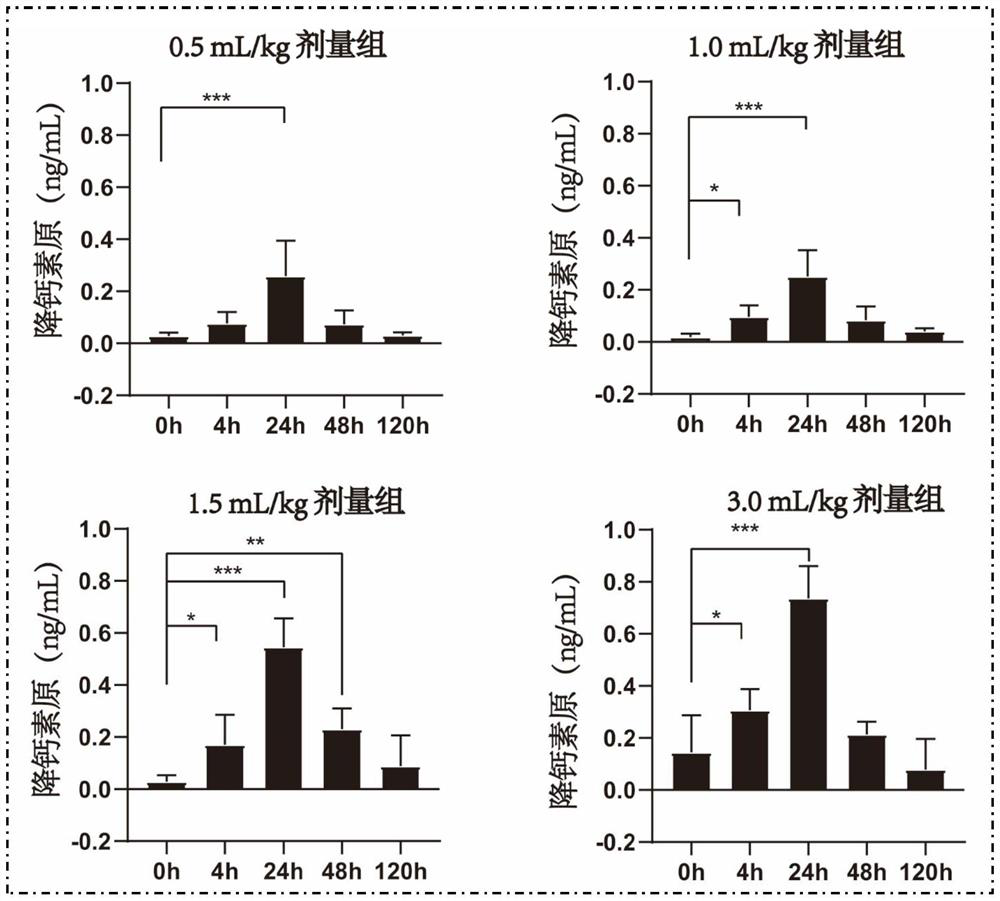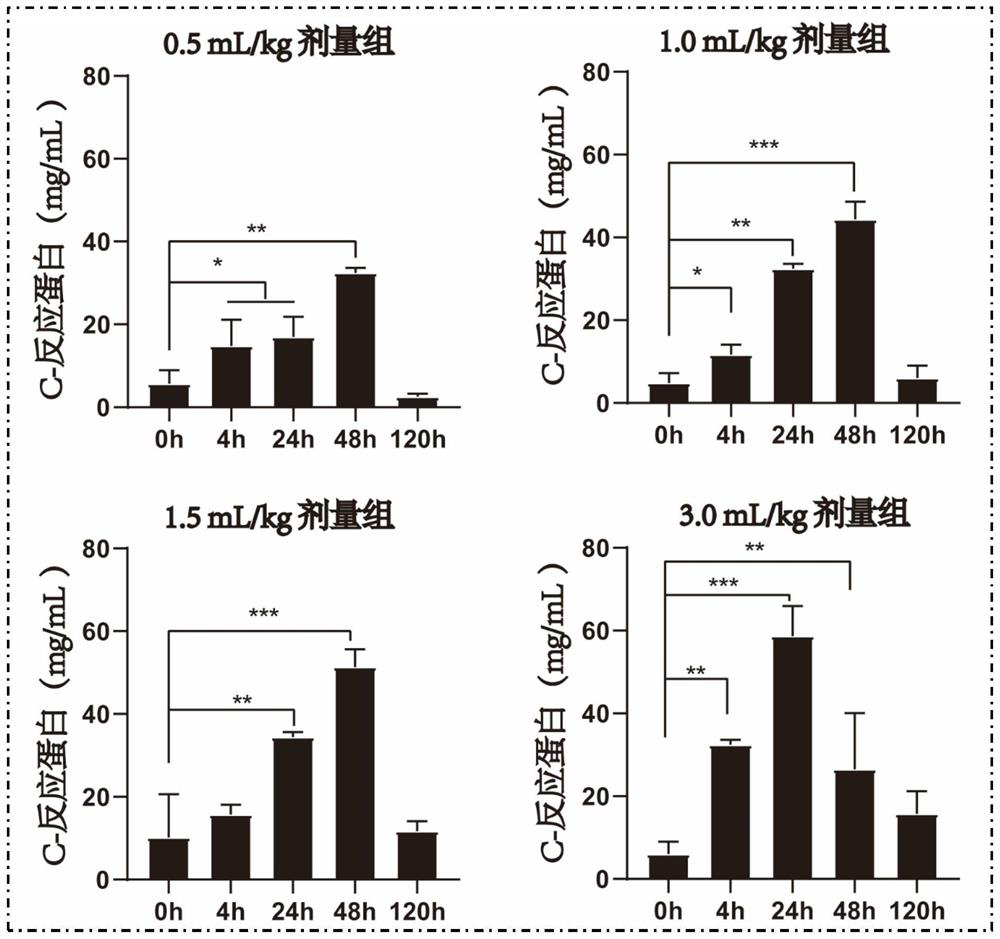Acute sepsis non-human primate model and construction method thereof
A technology of primate and construction method, which is applied in the field of acute sepsis non-human primate model and its construction, can solve the problems of unfavorable animal protection and welfare, and can not simulate human sepsis well, to achieve The effect of stable model results and simple methods
- Summary
- Abstract
- Description
- Claims
- Application Information
AI Technical Summary
Problems solved by technology
Method used
Image
Examples
Embodiment 1
[0041] In this experiment, 18 adult cynomolgus monkeys aged 8-16 were selected and divided into four groups: A, B, C, D, and were fed with normal feed in a single cage and adapted to feeding for 7 days. During the adaptive feeding of cynomolgus monkeys, the standard strain of Escherichia coli ATCC25922 was aerobically cultured on nutrient agar medium at 37°C for 18 hours, and the bacterial solution was diluted to 5×10^5 cells / mL. The cynomolgus monkeys were fasted at night and weighed from 7:30-8:00 am the next morning. The cynomolgus monkeys were weighed and restrained, the inner side of the left arm was exposed upward, the hair was removed with an animal shaver, and the vein was filled by wiping with an alcohol cotton ball. The cynomolgus monkeys divided into four groups A, B, C, D were injected with Escherichia coli intravenously at 0.5mL / kg, 1.0mL / kg, 1.5mL / kg, 3.0mL / kg, parallel injection, and bolus injection of bacteria. Use dry cotton balls to stop the bleeding. The do...
Embodiment 2
[0045] A method for constructing a non-human primate model of acute sepsis, comprising the following steps:
[0046] In this experiment, 6 adult cynomolgus monkeys aged 12-18 were selected and fed with normal feed in a single cage and adapted to feeding for 7 days. During the adaptive feeding of cynomolgus monkeys, the standard strain of Escherichia coli ATCC25922 was aerobically cultured on nutrient agar medium at 37°C for 18 hours, and the bacterial solution was diluted to 6.3×10^3 / mL. The cynomolgus monkeys were fasted at night and weighed from 7:30-8:00 am the next morning. The cynomolgus monkeys were weighed and restrained, the inner side of the left arm was exposed upward, the hair was removed with an animal shaver, and the vein was filled by wiping with an alcohol cotton ball. Escherichia coli was injected intravenously at 1 mL / kg, and the needle was inserted in parallel. After bolus injection of bacterial solution, the bleeding was stopped by pressing with a dry cotto...
Embodiment 3
[0050] A method for constructing a non-human primate model of acute sepsis, comprising the following steps:
[0051] In this experiment, 6 adult cynomolgus monkeys aged 15-20 years were selected and fed with normal feed in a single cage and adapted to feeding for 7 days. During the adaptive feeding of cynomolgus monkeys, the standard strain of Escherichia coli ATCC25922 was aerobically cultured on nutrient agar medium at 37°C for 18 hours, and the bacterial solution was diluted to 6.3×10^5 cells / mL. The cynomolgus monkeys were fasted at night and weighed from 7:30-8:00 am the next morning. The cynomolgus monkeys were weighed and restrained, the inner side of the left arm was exposed upward, the hair was removed with an animal shaver, and the vein was filled by wiping with an alcohol cotton ball. Escherichia coli was injected intravenously at 1 mL / kg, and the needle was inserted in parallel. After bolus injection of the bacterial solution, the bleeding was stopped by pressing ...
PUM
 Login to View More
Login to View More Abstract
Description
Claims
Application Information
 Login to View More
Login to View More - R&D
- Intellectual Property
- Life Sciences
- Materials
- Tech Scout
- Unparalleled Data Quality
- Higher Quality Content
- 60% Fewer Hallucinations
Browse by: Latest US Patents, China's latest patents, Technical Efficacy Thesaurus, Application Domain, Technology Topic, Popular Technical Reports.
© 2025 PatSnap. All rights reserved.Legal|Privacy policy|Modern Slavery Act Transparency Statement|Sitemap|About US| Contact US: help@patsnap.com



